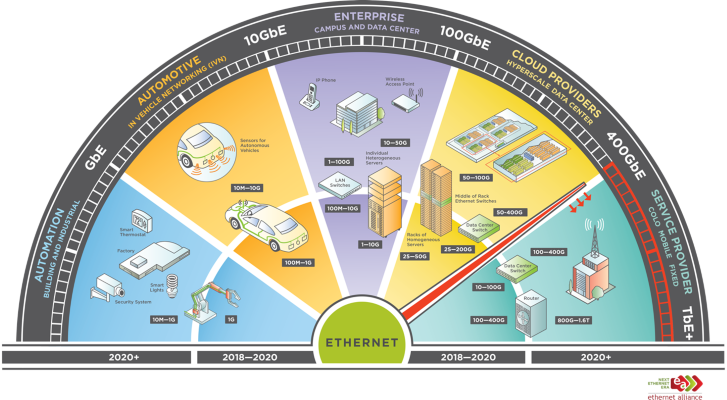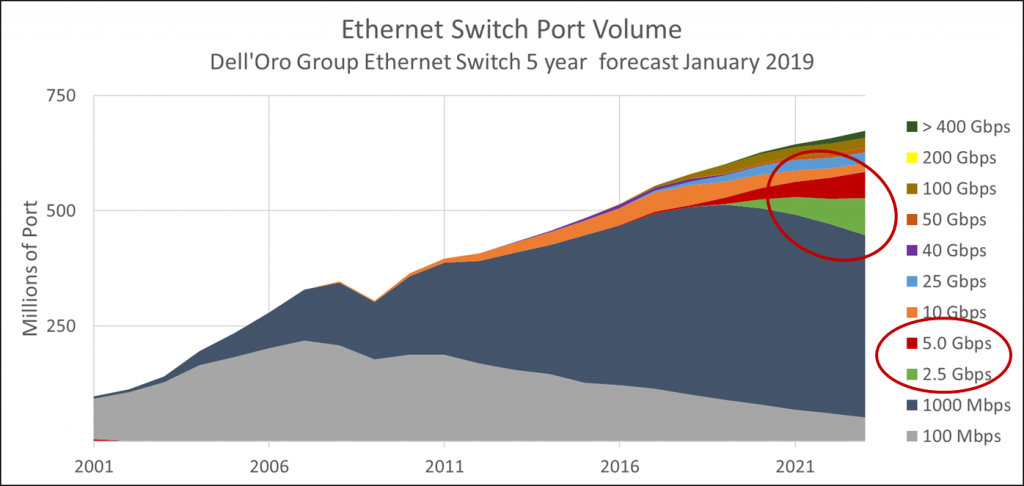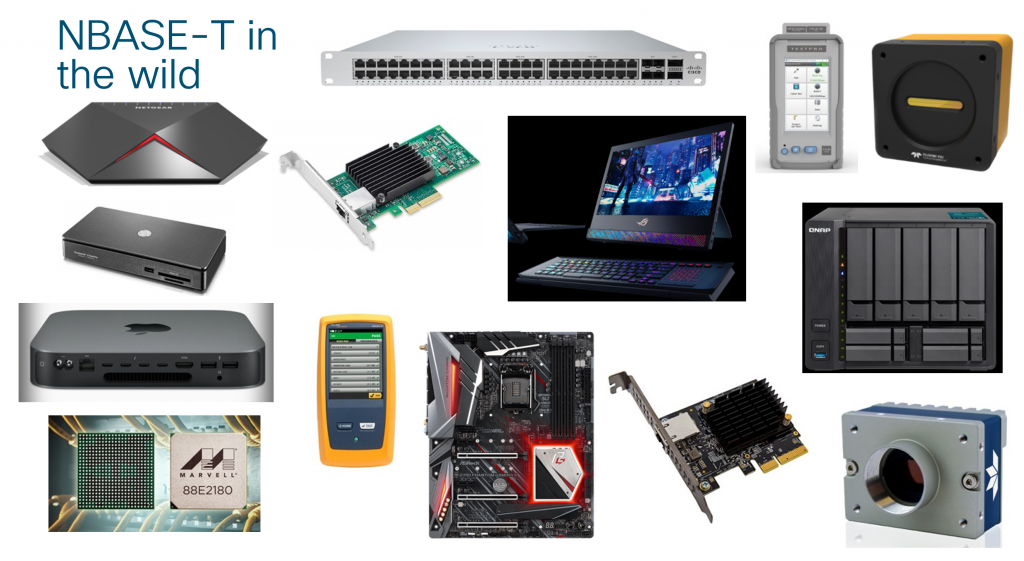NBASE-T: Success Through #TeamSport, So What’s Next?
Author: Peter Jones, NBASE-T Alliance Chairman, Cisco Distinguished Engineer
All good things must come to an end.
What’s next for the NBASE-T Alliance? We are joining with the Ethernet Alliance (“the Voice of Ethernet”) and taking our place as a key part of the larger Ethernet ecosystem.

I am amazingly proud to have had the privilege of leading the NBASE-T Alliance from its inception in October 2014 to today. We have achieved what the Dell’Oro Group described as:
NBASE-T technology is significantly impacting the market with the biggest transition we’ve seen in campus switching since 2000.
What was it that enabled this? We started by putting our users first. Our job as an industry is to develop technology so it’s ready when needed (not too soon, and not too late).
In 2011/2012, key industry players looked in their crystal balls and came to an important realization: the day would come when wireless APs would need more that 1000BASE-T. 10GBASE-T requires Cat6A and driving a change in the cabling infrastructure in time was not credible. We had to find a way to send more data over the Cat5e and Cat6 cable that dominated the installed base.
Lots of people from lots of companies worked away in back rooms for years to figure out the solution. Going faster on old cable was a very new, and uncomfortable, idea. But as you know, when engineers get inspired, many things are possible.
By early 2014, solutions had been developed, and the industry got itself ready to tell the story to the world. We announced the formation of the NBASE-T Alliance in October 2014 (release) , and shortly after, many alliance participants (including those that joined later) contributed to the Next Generation Enterprise Access BASE-T PHY call for interest. This became the IEEE P8021.3bz project, which (moving at a lighting pace for an IEEE 802 project) became a standard in less than 2 years from start to finish.
The work done by the NBASE-T Alliance (really, by individuals from its member companies), was key to building consensus in the industry and in IEEE 802.3. Consensus (defined at 75% in IEEE 802.3) is what enables the industry to move. As technologists, we can often get caught in the technical weeds of A vs B vs C. As I once said, “Our customers don’t care if we deliver the bits via carrier pigeon.” Focusing on solving real customer issues, with technology that was adoptable, enabled our success.
Fast forward to 2019. For nearly five years, we have released whitepapers, exhibited and spoken at conferences, run plug-fests, created videos, published blogs, tweeted, etc. etc. etc. We have achieved results beyond what I could have hoped for. 2.5G/5G BASE-T are projected to be the fastest-growing sections of the Ethernet market through 2022 and beyond.

When the Alliance started, I was not sure I was up to the task of leading this effort. When I explained this to my boss, he said, “Thanks, but go do it anyway.” And that is how I was given the opportunity to have this incredible experience that has changed my life. The chance to work with a great group of people, from many backgrounds, to transform an industry doesn’t come along too many times. I’m very glad that my boss believed in me, and trusted that I would rise to the occasion.
The key lesson is that #TeamSport really works. A team of people with different skills, working towards a common goal, can achieve amazing things. Just look at a few examples of NBASE-T products shipping today:

I’d like to thank all the people (and there are far too many to name) that helped on this journey. I believe we have served our users and changed the industry for the better. Thank you for the opportunity, and the privilege, to serve as a leader on this team.
Peter Jones



